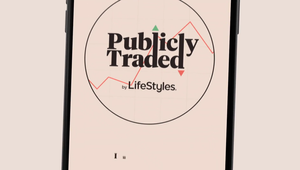
Magic Numbers: Adam Ferraro on "Jamming" with Clients to Identify Data Opportunities

Adam Ferraro is a multi-hyphenate strategist, having held roles across media and creative strategy in some of North America’s leading agencies. In his current role as VP of strategy at Performance Art, he oversees strategic planning for the agency’s clients across CPG, finance and tech. Adam’s approach to strategy is to make sense of the ‘messy middle’ between media planning and brand experience to create a holistic customer approach. When not writing briefs and co-creating with clients, you will likely find him riding trains for sport.
Speaking to LBB as part of the Magic Numbers series, he delves into data-driven creativity and highlights some of the industry's best practices - as well as some of its biggest blind spots.
LBB> What’s the number one question that clients are coming to you with when it comes to how they can better use data to enhance the creativity of their content and experiences?
Adam> Our clients aren’t necessarily coming with questions for us to solve, per se. Instead, we’re seeing a trend of clients wanting to 'jam' with us, which has been great. They bring to the table observations or data points they have hypotheses about, then we workshop the situation together, examining what we observe in the data and identifying new customer needs and opportunities we can address.
LBB> How can you make sure that data is elevating creative rather than forming a wind tunnel effect and knocking all the interesting or unique edges off that make something distinctive?
Adam> I tend to separate the need versus the solve, and break things down to specific tasks:
- Develop a focus: What are we using data to solve?
- Identify gaps: Do we have all the data we need to get a full understanding of the situation, or do we need to augment with additional sources?
- Identify which problems or opportunities require new creative solutions versus those which require optimisation.
For new creative solutions, I like to look for ways to solve a problem in a manner that feels holistic, instead of over-engineering each individual data point into a series of single solves. For optimisations, we treat what’s working as a jumping off point for new opportunities. If we see that website conversions are key factors in driving loyalty, we can apply that to areas like social content or commerce tactics. The goal is to be inspired by the data, not use it to create matching luggage everywhere.
LBB> Can you share with us any examples of projects you’ve worked on where the data really helped boost the creative output in a really exciting way?
Adam> Earlier this year, we started working with the ScottsMiracle-Gro company. We used a social CX approach to building journeys for their Scotts Lawncare and Miracle-Gro brands. We unpacked people’s relationships with their lawns and gardens and how they use them as expressions of their desire to bring people together and foster community. We leveraged data to find insights about how magnetic and moment-driven the lawn can be, which led to the launch of our ambient and always-on 'Lawnstream' platform.
LBB> More brands are working to create their own first-party data practice. How can a brand figure out whether that’s something that is relevant or important for their business?
Adam> There are plenty of reasons why brands should focus on first-party data. I think the most important tenet is to establish a practice rooted in loyalty and retention. Most of the brands I really admire use first-party data to create deeply personalised opportunities and experiences for their customers. As a marketer, you can be the brand that customers give burner email or phone numbers to because they don’t really want to connect, or you can strive to be the one that gets into the same kinds of DM conversations as their partner might. That’s the kind of difference that can be created if you use first-party data well.
LBB> We talk about data driving creativity, but what are your thoughts about approaching the use of data in a creative way?
Adam> It can be really challenging to approach a situation with an open mind and the willingness to solve a problem creatively. For part of the process – you have to be willing to not think so rationally or literally. The crescendo of an emotional piece of work is not as simple as plotting out Y=mx+b. To use data in a creative way, I think you need to workshop the data and the resulting insights with people whose point of view is different from yours.
LBB> "Lies, damned lies, and statistics" - how can brands and creative make sure that they’re really seeing what they think they’re seeing (or want to see) in the data, or that they’re not misusing data?
Adam> That can be really difficult, but that’s where it gets interesting. Part of data interpretation in advertising is that it is put through a cultural lens, which is inherently filled with bias. Marketing is not medicine – there’s an art to it. Every time the data passes through a new context, new means of achieving effectiveness may be discovered. What’s important is to have a diverse group of people apply their lens to something to look at multiple ways in to a solve.
LBB> What are your thoughts about trust in data - to what extent is uncertainty and a lack of trust in data (or data sources) an issue and what are your thoughts on that?
Adam> My interest in this is rooted in how data is acquired. There is often an issue with how data is collected in broader contexts, and consent about providing that data is important. There are systems in which targeting data or behavioural data is bought and sold in marketplaces and customers aren’t fully in the know about it. On the flip side, in the luxury category for example, there is a lot of precision strategy put into creating spaces and interactions across digital and physical retail where data is consensual and feels like a long-term exchange. It’s a bit of ceremony.
LBB> With so many different regulatory systems in different markets regarding data and privacy around the world - as well as different cultural views about privacy - what’s the key to creating a joined-up data strategy at a global level that’s also adaptable to local nuances?
Adam> It’s about being comfortable with fragmentation. Data regulations between North American countries is diverse; then add into the mix the UK, EU and China, and there are massive differences in data governance (that’s without even getting into things like how mobile OSs impact that regional fragmentation).
Here’s what may help operationalise the process:
- Align on a set of global goals, e.g., if your goal is to have life-long loyalty from high purchase segments, define what that means for each market.
- Allow each market to develop a plan of action, e.g., how to retain regularly updated personal data from high purchase customers through loyalty programs or incentives.
- Develop a global KPI reporting structure and allow each market to interpret it based on what’s possible in their respective market. Regional representation when it comes to data is critical so, just as there would be cultural nuances to a brand idea, expect that rigor to be there when it comes to customer data.
LBB> What does a responsible data practice look like?
Adam> Ideally, it holds to some core principles, such as:
- Collects data ethically.
- Ensures data is processed in an environmentally sustainable manner.
- Analyses data through the lens of a diverse team.
- Stores data in secure hosting environments, accessed only for the intent for which the data was collected.
LBB> In your view, what’s the biggest misconception people have around the use of data in marketing?
Adam> That data only highlights the needs and opinions of the loudest voices. As an example: I bet if more brands engaging in Pride campaigns could look at data around how customers feel about being represented, instead of listening to small, but very loud mobs of anti-trans people – they’d find new ways to connect with customers beyond the month of June.
LBB> In terms of live issues in the field, what are the debates or developments that we should be paying attention to right now?
Adam> This is a bit off topic, but I’m really interested in the economics of food and eating and how data will impact food prices. Between the North American launch of Too Good To Go, the everyday cost of eggs, and dynamic pricing coming to food delivery, there are reems of data, infinite ways to price shop, and lots of consumer stories and experiences to unpack.













